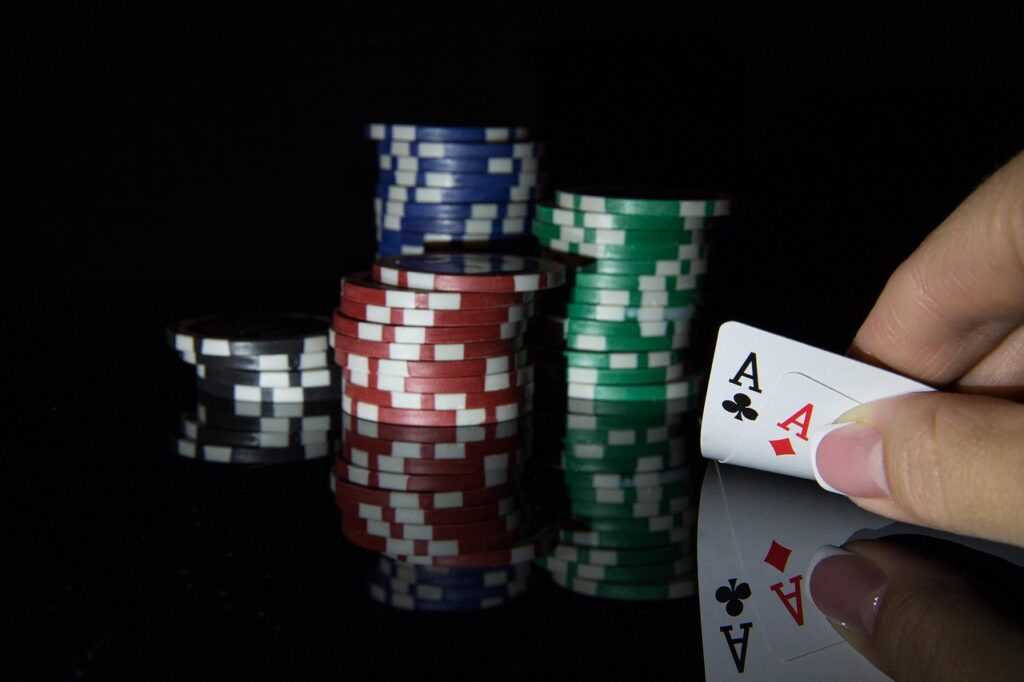Know When Bluffing Works
Bluffing isn’t about rolling the dice. It’s a calculated weapon used at the right time, against the right player, on the right board. The best players don’t just hope their opponent folds. They know when someone’s likely to. That comes from paying attention. Who tanks every decision? Who snap folds to pressure? Who bets with confidence versus hesitation? These are your tells.
You should also know which situations favor a bluff. Dry boards where no obvious draws are available are prime environments. Less chance your opponent hit anything, more room to represent strong hands. Heads up pots make things even better. Fewer variables, fewer players with surprises. Tight tables where players fold more than they call are a bluff’s playground.
A smart bluff doesn’t beg. It states. It knows where it fits in the flow of the game, and it doesn’t overreach. Respect the timing, play the player, and use the table conditions to your advantage.
Types of Bluffs That Actually Work
Bluffing isn’t one size fits all. Understanding the different types and when to use them can help you apply pressure with precision rather than guesswork. Here are three bluffing strategies that consistently deliver results when used with the right timing and opponents.
Pure Bluffs
A pure bluff is when you have absolutely nothing that can win at showdown, but you bet or raise anyway to force a fold.
Most effective against: Passive or overly cautious players
Best used: In single raised pots or heads up scenarios
Key tip: Only attempt pure bluffs when the board supports a credible story (e.g., scare cards, missed draws)
Semi Bluffs
A semi bluff occurs when you’re behind in the hand but have equity like a strong draw that could give you the winning hand if called.
Example hands: Flush draws, open ended straight draws, two overcards
Benefits:
You add fold equity now
You maintain the option to hit your draw later
Ideal opportunity: When betting forces a fold yet still gives you a chance to improve if called
Continuation Bets (C Bets)
These come after a pre flop raise and maintain pressure on the flop, regardless of your hand.
Why it works: You’re representing strength from your pre flop action
Execution key: Don’t auto fire every flop evaluate texture and opponent tendencies
Common mistake: Using C bets on wet boards where your opponent is likely to connect
Understanding the subtle differences between these bluff types allows you to tailor your game to each situation. The more believable your narrative, the higher the fold equity from beginners to pros.
Key Factors That Make or Break a Bluff

Bluffing isn’t random it’s built on reads, timing, and how well you sell the story. The story starts with your table image. Are you tight and selective, or loose and splashy? A solid image makes your bluffs believable. If you’ve been folding for an hour and suddenly fire big on the river, players are more likely to buy it. But if you’ve been involved in every pot, don’t expect much credit.
Stack sizes matter, too. Trying to bluff a short stack? Think again. They’re more likely to call with marginal hands because they don’t have much to lose. Larger stacks are more fold prone they guard their chips and hate giving up big pots without solid equity.
Bet sizing is the next signal. Too small and it looks weak easy call territory. Too big and you look desperate. Aim for believable pressure. A good bluff says, “I have it,” without shouting.
Then there’s board texture. Dry, disconnected boards with low cards make bluffs easier they don’t hit many ranges. But if the board’s paired or draws are out there, you better know if that card scares just you or everyone. Semi bluffs shine here, where you can hit the river if needed. On wet boards, pure bluffs get risky unless you’re dialed into your opponent’s tendencies.
Successful bluffing means putting all of this together. Don’t just push chips in. Paint the picture. Make sure it adds up.
Position Controls the Play
Bluffing isn’t just about having guts it’s about knowing when your position lets you get away with it. Late position gives you a huge edge. You’ve seen how others act, so your bluff can feel more convincing. Whether it’s the cutoff or the button, you’re working with more information than anyone else. That’s leverage.
Now, early position? Different story. You act blind. Bluff here and you’re often betting into strength or risk getting raised by the unknown. Unless you’ve built a tight table image or there’s a specific read, early bluffs tend to bleed chips.
In short, position is a weapon. Know when to use it. For a full breakdown on seat strategy, check out this guide on poker betting positions.
When to Shut It Down
Bluff didn’t land? That’s not a signal to keep firing it’s a cue to reassess. The worst bluffs come from stubbornness, not strategy. Unless the board shifts or you pick up a legit read that changes the math, pumping more chips into a losing story just bleeds your stack.
Pay attention to the response. Insta calls? Check raises? Those aren’t bluffs they’re players telling you they’ve got something. Resistance doesn’t always mean strength, but in poker, you respect heat until proven otherwise.
Learn when to let go. The pros fold mid bluff more often than you think. A sharp fold is a power move it says you can read the room, not just force the play. Bluffing is about telling a story that makes sense. When it stops making sense, stop telling it.
Bluff Smarter, Not Louder
Great bluffing isn’t about being bold it’s about being believable. A well timed bluff backed by logic and strategy is far more effective than a flashy move that doesn’t align with the action at the table. Here’s how to sharpen your approach:
Keep Them Guessing: Mix in Value Bets
If all your big bets are bluffs, opponents catch on. That’s where value betting comes in. By betting with strong hands like top pair or better, you train opponents to respect your aggression. This makes your actual bluffs harder to detect.
Value bet consistently when ahead to balance your betting range
Blur the line between strong plays and strategic deception
Avoid patterns that expose your bluffs
Set Traps Using Blockers and Ranges
Bluffing isn’t just about feel it’s mathematical too. Use blockers (cards that reduce the chance your opponent has a strong hand) to craft more convincing stories. Consider opponent hand ranges based on position and action, then target weak spots.
Use blockers to reduce the likelihood of strong hands in your opponent’s range
Analyze player tendencies and typical holdings from each position
Bluff when their range is capped or looks vulnerable
Master Timing Through Position
Your bluff will only land if the timing and pressure line up. Understanding your position at the table is essential and often overlooked. Late position lets you act on more information, while early bluffs carry more risk.
For deeper insights into how to wield position to your advantage, study this guide on poker betting positions.
Bluffing isn’t just a move it’s a message. Make sure you’re sending the right one with strategy, subtlety, and precision.
